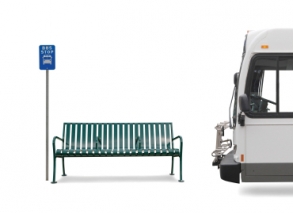Determining if You Need a Car

- High monthly costs – Keeping a car can cost you well over $1,000 per month with monthly lease payments, gas, insurance, maintenance, etc. Thankfully, there are many alternatives to owning a car.
- Man power – If you’re willing to brave the elements and get around Flintstone-style, consider a bike or your own two feet. Just be sure to factor weather and hygiene into the equation.
- Carpooling – With sites like iCarpool and CarpoolConnect, finding someone to go to work with has just gotten a lot easier. ‘Poolin’ can cut down transportation costs and is environmentally friendly.
- Public transportation – Depending upon the city you’re living in, public transportation might not only be cheaper than owning a car, but also faster, as well.
- Short-term borrowing – For weekend trips, consider renting a car. If you only need to use a whip for a few hours, consider asking a friend or getting a Zipcar membership.
Many of us made it through four years of college without a four-wheeled parasite sucking at our financial lifeblood. And those of us who did have a car usually didn’t have to pay for it. But what about now that you’re a big-shot post-grad with money to burn and
homies to roll with? Well let’s break it down. A typical month can easily cost over $1000: car loan or lease payment ($350), four gas fill-ups ($200), insurance payment ($150), oil-change and maintenance (boatload). In many popular cities for recent grads, it’s $1000 you can easily save while still participating in our favorite activities.
Whether you’re commuting to work or trolling the strip mall for fro-yo, you have a wide array of transportation options to get you out of this environment-killing, wallet-thinning hell. So throw a “For Sale” sign on that Jetta and read our suggestions on how to navigate a car-free life.
Commuting to Work
Take a Hike
The easiest, and most obvious, way to get around without a car is under your own power—via walking, cycling, rollerblading, or human-pulled rickshaw. All these options will not only get you from point A to point B, but also provide a little exercise and produce zero pollution. Whatever mode of transportation you choose, it’s important to get the right gear. Walkers will need a good umbrella, comfortable shoes, and maybe an old-school handcart for taking home big loads from the grocery store. Cyclists will benefit from a practical messenger bag, safety lights, and a well-fitting helmet. Transit riders may want a can of mace for the lunatic claiming to be “Mahatma Jesus.”
Unfortunately, there is more to it than just rolling up your pant leg and hopping on a ten-speed. If you want to get to work under your own power, you probably have to live within a few miles from work—Lance Armstrong, Floyd Landis, and Jake Gyllenhaal excepted. Also, you’ll need a backup plan for when the heavens open and walking to work will actually make you look like you swam there. Find some valuable tips on bicycle commuting here. Ride the City maps out bike-friendly routes in NYC.
Carpools
Zipping around in diamond lanes, reading the paper, sipping lattes—talk about the life. Websites like iCarpool and CarpoolConnect, match commuters with compatible routes and schedules with one another. Less official but still viable are Casual Carpools, an intriguing idea that is becoming more common in the United States, particularly in cities like Washington D.C. Basically, it’s like Craigslist’s “Casual Encounters,” but instead of sexual deviance, complete strangers offer a ride in their car so they can use the carpool lane. The drivers are called "body snatchers" and the passengers are called "slugs." Here are the unofficial Casual Carpool Rules, as well as a map of "slug line" locations in the D.C.-Maryland-Virginia area.
Public Transportation
Given the city’s ridiculous traffic, ridiculous parking fees, and excellent subway system, being a “straphanger” in Manhattan is a no-brainer. But even in car-dependent regions like Los Angeles, there are train lines and buses galore. As noted before, you may have to make some deliberate choices about where you live if you want to take advantage of public transportation. But remember that in most major cities, a bus is never that far away. Even if they don’t go all the way to your office, buses should at least provide an easy way to get to mass transit stations. Heavy rails like the BART in San Francisco and light rails like the one in San Diego are also great options.
Vespa, Anyone?
Just because it burns gas, doesn’t mean it’s a car. A Vespa-style motor scooter has an internal combustion engine, but it’s a far cry from a car. Less than $2000 will buy us a scooter capable of getting up to 45 mph and over 70 mpg. In addition to the gas savings, you’ll pay less for insurance and registration and get to wear a cool helmet while saying “ciao” to passing fillies. Find a Vespa dealer near you.
Weekend Jaunts
Rent a Car
Although the costs of renting a car can add up quickly, it is a viable option for the occasional three-day weekend getaway. If you need wheels, try Thrifty, Enterprise, or Dollar. Most major rental agencies have a hefty surcharge for drivers under 24 or 25, which can really hurt a budget-conscious grad. Call ahead before booking to find out what the real rate will be and to inquire about insurance options. Rent-a-Wreck waves the underage surcharge, but don’t be surprised if you get a car that Xzibit would laugh at on Pimp My Ride. Finally, ask if your employer gets special rates with any car rental companies. In many cases, your credit card may provide limited rental insurance, but check in with the company before waving off insurance options willy-nilly.
On the occasions where you need to haul a bunch of gear, or bring home that new foosball table, U-haul is an excellent option. We all know about their trailers and ginormous moving trucks, but they also rent cargo vans and pick-ups for $20 per day (plus a per mile fee which can hurt you on a long trip).
Amtrak and Greyhound
They may not be glamorous, but Amtrak trains and Greyhound buses are two convenient, affordable options for getting where you need to go. Both systems run throughout the country with frequent departure times. Also, check for other regional bus services, like Megabus and the (in)famous “Chinatown” services (e.g., Fung Wah) connecting DC, Baltimore, Philly, New York, and Boston. Many cities are serviced by affordable shuttle flights that run on the hour, so don’t rule out flying, either. Check out our tips on Finding Online Travel Deals.
Shopping, Dining, and “Entertainment”
Friends
There are several ways of having the convenience of a car without the cost. They are named Frank, Bob, and Cindy. You can carpool with them to work, tag along on trips to Costco, and occasionally borrow their car. Be careful though—as I found out during a recent week of car troubles, mooching gets old fast.
Car Sharing
In a perfect world, you would be able to “own” a car for the few days a month when you need it and you would never have to worry about parking or maintenance. This is exactly the idea behind car sharing companies like Zipcar, which offer access to a huge fleet of autos positioned around most major cities. Monthly memberships start at around $50, and an hour of car use runs less than $10. Before committing, check the sites to see if you live in an area with a high density of cars. When you need one, you just find out where it’s parked and then use the access card provided by the company to get into the car. Note that while the hourly rates are low, Zipcars are best used for short drives and errands of a few hours. If you are going away for the weekend, a traditional rental is more economical.
Free Delivery
The two greatest words in the English language. It’s very common for websites and increasingly common for physical stores to offer free delivery. Take advantage of it whenever possible. For $79 per year, Amazon Prime offers free 2-day shipping on any order, without the $25 spending requirement.
Taxis
At the end of a hard night of partying, not owning a car is for the best. The only thing more inconvenient than car ownership is a DUI. Taxi fares can get pricey, so use sparingly, and try to share the cab.
Getting/Keeping a Girlfriend
The Josh Hartnett Approach
If the movie 40 Days and 40 Nights taught me anything about dating (which it most certainly did), it’s that a bus ride can be a fun-filled romantic experience. For a mere four-dollars—a true gentleman picks up his date’s fare—the afternoon will fly by.
The Two-seater Approach
If there’s one thing women can’t resist—aside from Gucci handbags—it’s a man on a motor scooter. Think about it. They get to hold on to a man’s hard body, with the wind blowing through their hair, and an engine vibrating beneath their, er, body. In fact, this scenario would work splendidly even if the roles were reversed.
The We Might as Well Stay in and Cuddle Approach
I hope that this is self-evident.






Comments
(1)Who needs a car anyway? Cars make for accidents. Plus, think about all the calories you burn on foot. Zipcars are a godsend and you can split the fee with a car full of friends for road trip adventures. Also, I always thought you had to be 25 to rent, but you do not. There is a slight fee. But hey, one thing to look forward to while climbing the years of our precious 20s.
POST YOUR COMMENT